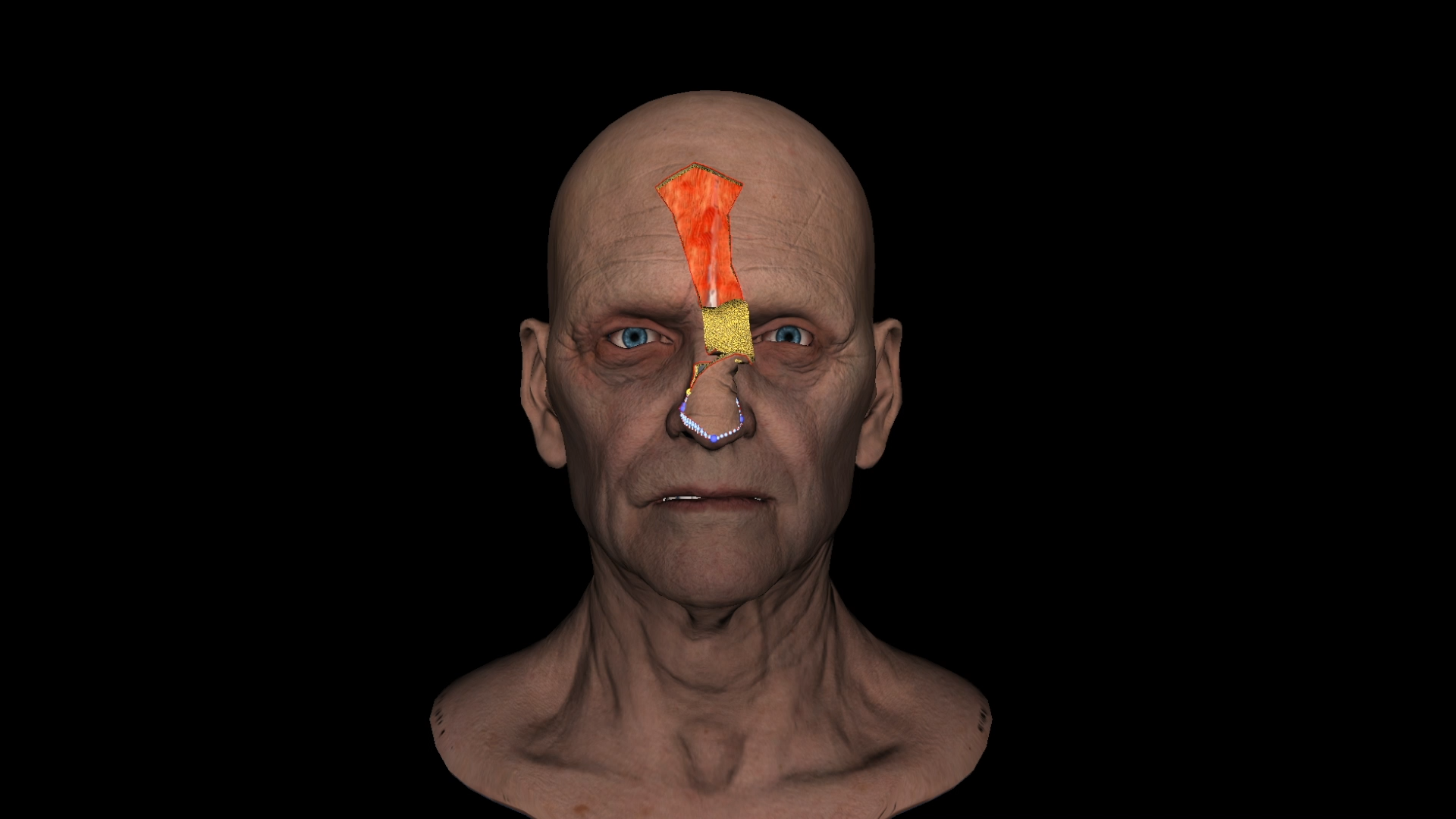Background and Objectives
Interactive surgical simulation using the finite element method to model human skin mechanics has been an elusive goal. Mass-spring networks, while fast, do not provide the required accuracy.
Methods
This paper presents an interactive, cognitive, facial flaps simulator based on a projective dynamics computational framework. Projective dynamics is able to generate rapid, stable results following changes to the facial soft tissues created by the surgeon, even in the face of sudden increases in skin resistance as its stretch limit is reached or collision between tissues occurs. Our prior work with the finite element method had been hampered by these considerations. Surgical tools are provided for; skin incision, undermining, deep tissue cutting, and excision. A spring-like “skin hook” is used for retraction. Spring-based sutures can be placed individually or automatically placed as a row between cardinal sutures.
Results
Examples of an Abbe/Estlander lip reconstruction, a paramedian forehead flap to the nose, a retroauricular flap reconstruction of the external ear, and a cervico-facial flap reconstruction of a cheek defect are presented.
Conclusions
Projective dynamics has significant advantages over mass-spring and finite element methods as the physics backbone for interactive soft tissue surgical simulation.
Abstract
Image
[Download]
Wang, Q., Tao, Y., Cutting, C., and Sifakis, E. 2022. A computer based facial flaps simulator using projective dynamics. Computer Methods and Programs in Biomedicine 218, 106730.
DOI:
